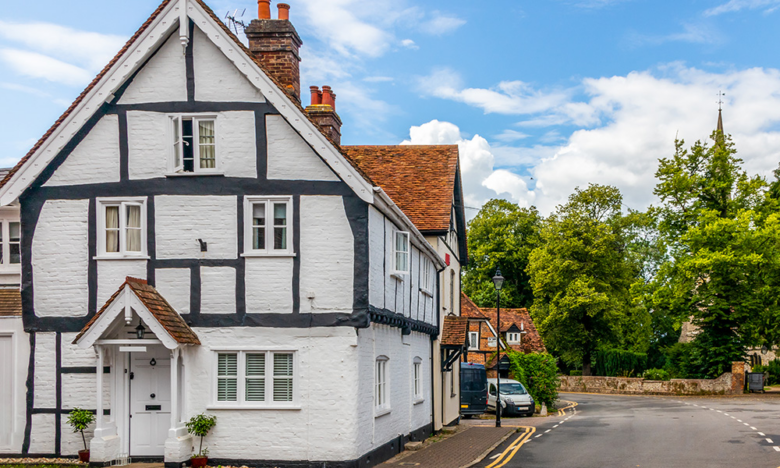
What to do if you uncover unauthorised alterations on a listed building
When considering buying a listed home, it’s important to check that any works carried out have the necessary approvals. But what do you do if you discover unauthorised alterations have been made to your home?
What is unauthorised work?
As listed properties are recognised for their architectural significance, restrictions are often placed on how much the buildings can be changed. No two listed buildings are the same, so there are no hard and fast rules about what owners can and can’t do to their listed home; restrictions will also vary depending on the grade at which they are listed. Most listed properties will be Grade 2 and so will have fewer restrictions than a Grade I or II*, but there could still be significant parts of the building that can’t be changed.
Unauthorised work, therefore, is any work carried out after the building was listed that didn’t gain the necessary building consent or planning permission.
What are the consequences of carrying out unauthorised work?
There can be serious consequences for not applying for the necessary permissions – it’s a criminal offence to alter a listed building in any way that affects its character without approval. The maximum penalty is two years in prison or an unlimited fine. If you’ve bought a home and are considering doing work, it’s wise to check the National Heritage List for England for details of why the property is listed. Any features mentioned explicitly in the official listing documents cannot be changed. If you’re still unsure, speak to your local conservation officer, as they should be able to advise on what’s possible.
It’s also worth noting that both the person who carried out the works and anyone who caused or instructed the work to be carried out will be seen as having committed the offence if unauthorised works are discovered, so if you’re relying on an architect or builder to carry out your work, be sure to double check that all consents are in place and accurate and plans aren’t adapted as the project develops.
What if I discover unauthorised work on a property I’m buying?
When buying a property, your surveyor will formally ask the current owners if they have made any alterations, and they need to supply copies of consents if this is the case. If such works are revealed, it will be up to you if you still wish to proceed. If the work is extensive, this becomes more of a risk as you may not be able to sell the property unless you rectify the works or apply for retrospective consent. If applying for retrospective consent, it’s wise not to proceed with the purchase until this has been granted. Gaining consent can be a lengthy and costly process. Expect to pay upwards of £2,000 for a specialist to prepare all the information you need and wait 8-13 weeks for a decision, depending on the scale of the problem.
Although the current owner is meant to declare any alterations, it may still be the case that works are discovered after you’ve moved in. For this reason, it’s highly recommended that you take out a specialist-listed building home insurance policy. This will cover you against the cost of rectifying unauthorised alterations if they are discovered, provided you made all suitable enquiries through your surveyor and solicitor at the point of purchase. For this reason, a comprehensive building survey is also recommended when buying a listed property.
Can I be forced to rectify unauthorised works?
While you may have bought a home because of its stunning extension or the conservatory that was added to it, if these are deemed to have been added without the required consents, you can be made to rectify the work through a listed building enforcement notice.
The local planning authority can serve this on the owner of the building or anyone that has an interest in the building. It has the sole purpose of restoring or alleviating the effects of any unlawful works. Failure to comply with a listed building enforcement notice is an offence, and you could be subject to an unlimited fine. In this case, the owner has committed the offence, not the person who has undertaken the work. Owners must either appeal or comply with a listed building enforcement notice, even if a previous owner carried out the works.
How to protect yourself against unauthorised works on a listed building
There are a few steps you can take to minimise the risks associated with buying a listed building.
- Firstly, make sure you get a full building survey. In addition to giving you a detailed insight into the condition and structural integrity of the property, this will also identify any repairs that have been made to the property and any works that have been carried out so you can confirm they have the necessary consents.
- While your solicitor will formally ask about alterations in the questions to the vendor form, it’s also worth speaking to the current owners informally. They may not realise that something as minor as changing a window could breach regulations, so don’t be afraid to ask questions.
- If you’re happy that all the necessary checks have been carried out, remember to take out comprehensive listed building home insurance in case issues arise further down the line.
Top tips for checking if unauthorised works have been carried out
- Check the planning register online at the local planning authority website. Any planning or listed building consents will be recorded, and the drawings, reports and decision notices are normally all available to view.
- If consent has been granted, ensure that the alterations have been carried out per the approved plans. Your surveyor will be able to help with this.
- Speak with the local conservation officer who may have personal knowledge of the building and any alterations.
- If you want to confirm the date of any alterations, Building Control records are normally available at the local council offices.

